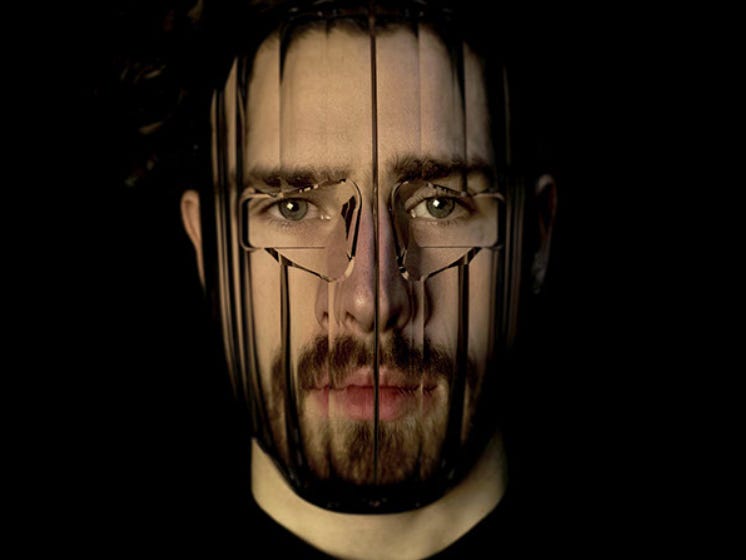XR and the Metaverse: Privacy By Design
Innovative XR designs for privacy can be embedded in the glasses themselves. How these issues play out will give the Multiverse/Metaverse different "flavours" depending whose device you own.

Computing will shift from our phones to the glasses we wear. As it does, how we think about privacy, security, authentication and trust will also change.
[This post was originally published in 2020]
We buy a mobile phone based on what it can do and how it looks. To some degree, we might also buy it based on how protected and safe we feel.
But these factors will be super-charged with glasses. They are more personal. We will wear them (nearly) all the time. They will collect more data (where we look, who we interact with, what we see).
As mixed realities move from our pockets to the bridge of our nose, we’ll be choosing glasses based on:
- The cool things they do
- How fashionable they look
- And what they tell the world about our relationship to privacy, security and trust
Old Paradigms Need Not Apply
Apple will become a ‘social media’ company. Not because it has designs on taking your data and using it for advertising.
But because the opposite is true: Apple’s has specific beliefs about privacy and a strong commitment to AR (and launching a great pair of glasses).
If you extrapolate this to a world in which your glasses will eventually be ‘untethered’ from your phone, Apple will create a giant moat around its eyewear. The social interactions that it allows will likely be focused on hyper-local experiences with very little data being shared back to ‘cloud’ services.
But Apple isn’t the only one. Mostly, they’re a good example to use because their approach is so well known.
Even Microsoft, through things like their approach to Azure Spatial Anchors, has a particular ‘flavour’: one which emphasizes privacy as a product of enterprise security.
Regardless, the key thing to understand is that the paradigms which we accept on our phones will not always translate neatly to computing that happens in our field of vision.
Three Privacy Designs
So let’s throw out the old rule book. And let’s imagine that you can buy one of dozens of XR-enabled glasses.
Each of these glasses may have its own approach to privacy, security, authentication and trust.
You won’t just be buying glasses because of what they DO, but also for their fashion and their unique designs for privacy.
Here are three ways glasses could differentiate from each other:
Security for OTHERS
You tend to think about security and privacy as being related to yourself. But glasses will also differentiate based on the degree of privacy they provide to others.
This week, Signal announced the ability to blur the faces of other people in photos:
AR glasses could provide the same embedded tools. They could:
- Prevent you from doing facial recognition of others, especially people who aren’t wearing glasses themselves
- Prevent you from doing facial recognition without permission. Approach someone who is ALSO wearing Apple Glass and they can provide permission for access to their identity information
- Allow you to do facial recognition. Facebook might take this approach (although allow you to ‘toggle off’)
Videos, photos and scans could have features similar to Signal in which faces are either automatically blurred or where you have the option to toggle this feature on/off.
Facial Scanning Security
There’s are emerging techniques for avoiding surveillance.
Reflectacles, for example, promises blocking protection:
“Reflectacles privacy eyewear are designed to fool facial recognition systems that use infrared (IR) for illumination or 3D mapping/scanning. Two proprietary analog technologies are used to maintain your privacy: infrared blocking lenses and reflective frames. Reflectacles allow you to opt out of non-consensual facial recognition systems being used by governments, corporations and individuals.“

So now imagine Apple including a “blocking” option. Wear your Apple Glass and they will offer you added protection from being scanned unwillingly by third parties.
Approach someone else with Apple Glass and the two wearables can authenticate with each other, and turn this blocking feature OFF for your friend.
Cameras and Indicators
Perhaps the most obvious early question about AR glasses security/privacy design is related to the camera. LiDAR scanners are less scary to consumers. (They’re wrong, but let’s leave that for now!)
It’s the Glasshole effect. If you have a camera on your glasses, other people will feel like their privacy has the potential of being invaded.
This might be why there are various rumours about what Apple will include in the first version of Apple Glass. Even if they DO include a camera, they would likely also include some sort of visual indicator to others (a light, for example) which shows that the camera is ‘in use’.
This also creates a challenge for the pass-through video approach to AR which is arising from the VR field. It might be fine for your living room, but would create privacy issues as a ‘wear everywhere’ approach.
AR Design Is More Than Fashion
You will be buying AR glasses for more than just fashion or functionality.
It’s perhaps a false dichotomy, but I often try to picture the different signals we’ll send if we’re wearing Apple Glass or Facebook AR glasses: each will present to the world a different, um, viewpoint on issues related to privacy, security and trust.
Facial scanning, identity blurring, protection from being scanned and the use of cameras are three of the ‘dials’ that different device makers will be able to turn in their approach to these issues.